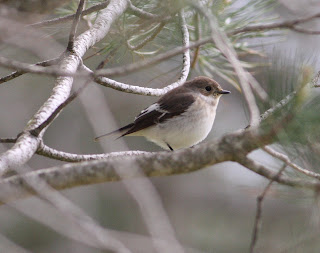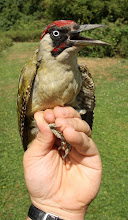I spend a good deal of my working life working to protect and improve grassland sites for wildflowers (amongst other taxa). They take a lot of looking after as we need to keep nutrient levels low enough for the wildflowers to thrive. We protect and enhance existing meadows by cutting & removing the grass once a year and removing scrub regrowth and we increase grassland areas by removing nutrient loving brambles and scrub.
I thought I'd share with you a few of the flowers I've seen this year:
Above: A Bee Orchid
Above: A Pyramidal Orchid (not yet fully in bloom)
Wild orchids are the signature species of many a grassland site and a site stuffed full of them is a sure sign that it is in healthy condition. The Bee Orchid is rarer than the Pyramidal Orchid on the site I took these photographs at.
Above: Common Toadflax
The Common Toadflax is a later flowering plant that, this year, benefitted from an early cut when we removed a lot of coarse grass that would have outcompeted this plant otherwise. A colony of 30+ plants this year were the first I've ever seen. They're not flowering now but if you want a tip for things to look at this time of year, this very wet weather is good for autumn fungi forays.
Moving on though, a Green Wood Ringer post would not be complete without the mention of birds and ringing. There has been nothing out of the ordinary to report of late except for two good catches of birds ringed at Priory Country Park (93 and 73) and the reaching of 1000 captures for the year at Sandy Smith Nature Reserve (including the 2000th new bird for the site).
I am awaiting official reports of recoveries & controls from the Ivel Ringing Group secretary that should include a Lesser Redpoll ringed by me and controlled in Northumberland.
A weekend trip to my Dad's in October to clear out his loft left little time for ringing but a gap in the weather and an early start produced a nice bird.
Above: A grinning Bald Coot (my brother Mark) meets a young Sparrowhawk!
Enthusing other people (family, friends, the wider public) about wildlife and birds is part of what I do and I hope it makes people more appreciative of the world we live in and inspires them to take better care of it. I do my little bit by monitoring birds and taking practical action to create, protect and improve habitats. Embarrasing my little brother along the way is a rare bonus!




















































